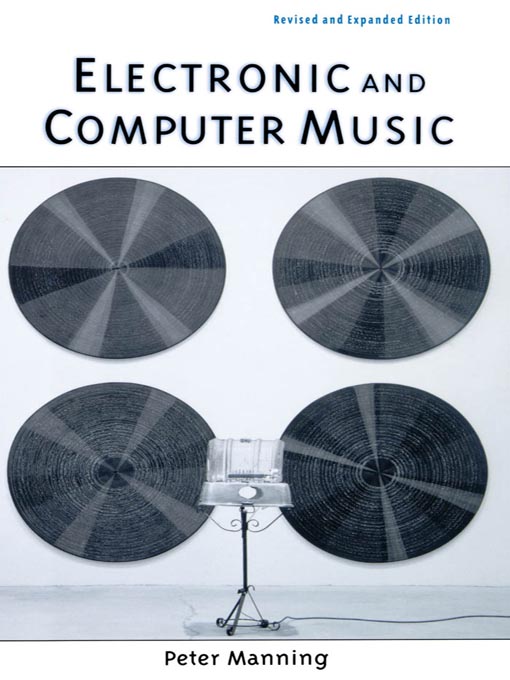Leonardo Music Journal, vols. 9-14 (1999-2004)
Filed under journal | Tags: · computer music, electroacoustic music, electronic music, music, music history

LMJ 9: “Power and Responsibility: Politics, Identity and Technology in Music” (1999)
Contributors include: Nicolas Collins, Krystyna Bobrowski, Sergi Jordá. William Duckworth, Mark Trayle, Chris Brown, Justin Bennett, Lowell Cross, Daniel Goode, Fred Ho, Rajmil Fischman, David Dunn, René van Peer, William Osborne, Frederic Rzewski, David Cope, Roger Alsop, Ann Warde, Dante Tanzi, Greg Schiemer, Suguru Goto, Peter Manning, David Ryan, Sasan Rahmatian, John Bischoff, Guy van Belle. Plus notes by CD Contributors. Includes CD: “Power and Responsibility: Converted to Streaming Between Machines,” curated by Guy van Belle.

LMJ 10: “Southern Cones: Music out of Africa and South America” (2000)
Contributors include: Coriún Aharonián, Lucio Edilberto Cuellar Camargo, Carlos Palombini, Daniel Velasco, O’dyke Nzewi, George Lewis, Lukas Ligeti, Artemis Moroni, Jônatas Manzolli, Fernando Von Zuben and Ricardo Gudwin, Damián Keller, Neil McLachlan. Plus notes by CD Contributors. Includes CD: “Southern Cones: Music out of Africa and South America,” curated by Jürgen Bräuninger.

LMJ 11: “Not Necessarily ‘English Music’: Britain’s Second ‘Golden Age'” (2001)
After the first installment of Cool Britannia beguiled the 1960s with its peculiar conflation of Pop, Art, Fashion and Politics, musical experimentation flourished in the U.K. Styles of improvisation, minimalism, electronic music, performance art, political music and “amateur” music grew out of British art schools, universities and urban villages; styles neither as self-important as those of Europe nor as blithely technocratic as those of North America — a peculiarly “English Music” (and Scottish and Welsh). Includes Two-CD Set: “Not Necessarily ‘English Music,'” curated by David Toop.

LMJ 12: “Pleasure” (2002)
From its naughty lyric content to the pounding physicality of its sound, Pop music is unabashedly driven by the pleasure principle. “Serious” music, however, is usually perceived as more refined, genteel, or to put it another way, repressed. And the avant-garde has traditionally found itself in the peculiar position of accompanying bohemian, hedonistic lifestyles with defiantly itchy and uncomfortable music. But are pleasure and thoughtful invention necessarily at odds? Can there be no “bump and mind”? … LMJ 12 includes articles and personal reflections on the role of pleasure in all genres of music. Includes CD: “From Gdansk till Dawn: Contemporary Experimental Music from Eastern Europe,” curated by Christian Scheib and Susanna Niedermayr.

LMJ 13: “Groove, Pit and Wave: Recording, Transmission and Music” (2003)
Sound is encoded in grooves on vinyl, particles on tape and pits in plastic; it travels as acoustic pressure, electromagnetic waves and pulses of light. The rise of the DJ in the last two decades has signaled the arrival of the medium as the instrument — the crowning achievement of a generation for whom tapping the remote control is as instinctive as tapping two sticks together. Turntables, CD players, radios, tape recorders (and their digital emulations) are played, not merely heard; scratching, groove noise, CD glitches, tape hiss and radio interference are the sound of music, not sound effects. John Cage’s 1960 “Cartridge Music” has yet to enter the charts, but its sounds are growing more familiar. In LMJ13 authors contribute their thoughts on the role of recording and/or transmission in the creation, performance and distribution of music: Includes CD: “Splitting Bits, Closing Loops: Recording, Transmission and Music,” curated by Philip Sherburne.

LMJ 14: “Composers inside Electronics: Music after David Tudor” (2004)
Inspired by David Tudor and others, the experimental music community in the 1970s adopted a new working method based on seat-of-the-pants electronic engineering. The circuit — whether homemade, self-hacked or store-bought but scrutinized to death — became the score. A generation later, aspects of the Tudor aesthetic have spread well beyond the avant-garde: hip-hop, house and other forms of dance music and electronica share a similar obsession with the quirks intrinsic to specific pieces of audio gear. In this special volume of Leonardo Music Journal, authors consider all aspects of the work of David Tudor, the influence of Tudor’s ideas on their own work and/or the role of technological idiosyncrasies in their composition, performance or production. Includes CD: “David Tudor: Live Electronic Music,” curated by Ron Kuivila.
Download (removed on 2013-12-17 upon request of the publisher)
Comment (0)Peter Manning: Electronic and Computer Music (1985–)
Filed under book | Tags: · computer music, electroacoustic music, electronic music, music, music history, musique concrète

“Peter Manning’s classic text Electronic and Computer Music deals with the development of the medium from its birth to the 21st century. The first section of the book covers electroacoustic music from its beginning at the turn of the century to 1945, the development of post-1945 ‘classical’ studios, development of voltage-controlled technology, and its commercial exploitation in tape works, live electronic music, and the early use of electronics in rock and pop music. Section two, Computer Music, treats the digital revolution from the early experiments during the late 1950s and early 1960s to the advanced systems of today. Emphasizing the functional characteristics of emerging digital technologies and their influence on the creative development of the medium, Manning covers key developments in both commercial and the non-commercial sectors.”
First published by Oxford University Press, New York, 1985.
Third, revised and updated edition
Publisher Oxford University Press, New York, 2004
ISBN 0195144848, 9780195144840
x+474 pages
Key terms:
empreints DIGITALes, electronic music, IRCAM, MIDI, musique concrete, Wergo, CSOUND, timbre, personal computer, MUSICn, computer music, digital-to-analog converter, Apple Macintosh, music workstation, Synclavier, Yamaha, analog synthesizer, ring modulator, Synket, CCRMA
Third edition (2004, 30 MB, updated on 2021-4-8)
Fourth edition (2013, added on 2021-4-8)

